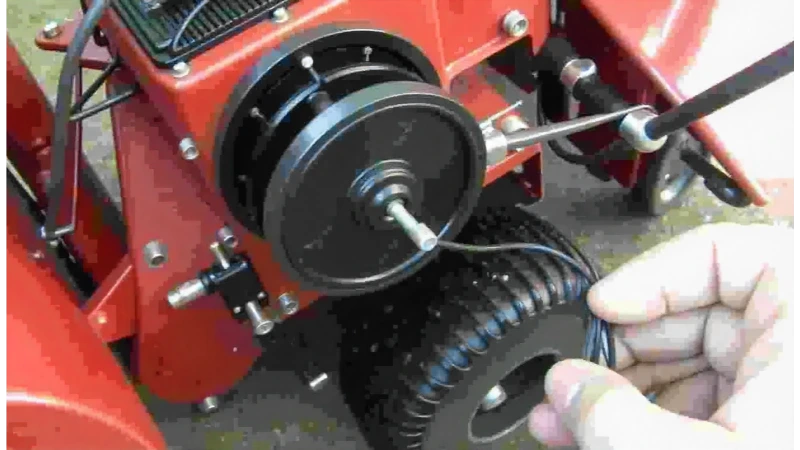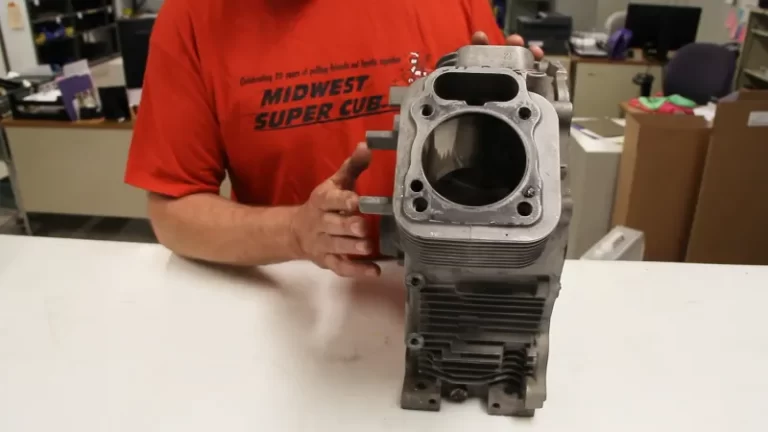Snow Blower Pull Cord Stuck? Your Ultimate 2025 Troubleshooting Guide
There’s nothing more frustrating than being knee-deep in fresh powder, ready to clear your driveway, only to find your snow blower’s pull cord is completely stuck. That single, unyielding component stands between you and a clear path. This common problem can bring your snow-clearing efforts to a screeching halt, leaving you feeling stranded and annoyed.
You pull, and it doesn’t budge. You pull harder, and still, nothing. It feels like it’s welded in place. This guide is here to walk you through the most common reasons why your snow blower pull cord is stuck and provide you with actionable, step-by-step solutions to get your machine running again.
You'll Learn About
First Things First: Why Is My Snow Blower Pull Cord Stuck?
Before you can fix the problem, you need to understand the potential culprits. A stuck pull cord is a symptom, not the root cause. The issue typically lies within one of three main areas: the recoil starter assembly, the engine itself, or an issue with the electric starter engaging the flywheel.
We will break down each of these possibilities, helping you diagnose the issue with confidence. From simple fixes to more involved repairs, we have you covered. Let’s get that snow blower back to work.
Understanding the Recoil Starter Assembly
The recoil starter is the mechanism that your pull cord is part of. It’s a relatively simple system involving a rope, a pulley, and a recoil spring. When you pull the cord, it spins the engine’s flywheel to start it, and the spring retracts the cord back into the housing.
If the pull cord is stuck, it’s often an issue within this assembly. The rope could be tangled, the spring could be broken or jammed, or debris could be obstructing its movement. Sometimes, exposure to moisture can cause parts within the assembly to freeze solid, especially in frigid temperatures.
Diagnosing the Problem: A Step-by-Step Approach
To figure out what’s wrong, we’ll start with the simplest potential issues and work our way to the more complex ones. Safety is paramount, so before you begin any troubleshooting, you must disconnect the spark plug wire. This prevents the engine from accidentally starting while you’re working on it.
Step 1: Check the Recoil Starter First
The most frequent cause of a stuck pull cord is the recoil starter assembly itself. It’s exposed to the elements and can easily get gummed up with dirt, ice, or debris. This is often the easiest problem to fix.
Start by removing the bolts that hold the recoil starter housing to the engine. Typically, there are three or four bolts. Once removed, you can lift the entire assembly off. Now, try pulling the cord. If it pulls freely, the problem is not with the starter assembly; it’s with the engine. If the cord is still stuck, you’ve isolated the problem to the recoil starter.

Troubleshooting a Stuck Recoil Starter
If the recoil assembly is the issue, you’ll need to inspect it closely. Look for any obvious obstructions like dirt, ice, or tangled rope. Sometimes a gentle cleaning and lubrication can solve the problem.
If the rope won’t retract, the recoil spring might be the problem. Be extremely careful when working with the recoil spring; it’s under tension and can cause injury if it releases unexpectedly. If you’re not comfortable with this step, it might be best to take it to a professional or replace the entire assembly.
When the Engine is the Problem
If the pull cord moves freely after you’ve removed the recoil starter, the issue lies within the engine. This can seem intimidating, but several common issues are relatively straightforward to diagnose. The engine’s inability to turn over is what’s preventing the pull cord from moving.
The two most likely culprits for a seized engine are a hydrolocked cylinder or a mechanical seizure due to lack of oil or internal damage. Let’s explore these possibilities.
Is Your Engine Hydrolocked?
A hydrolocked engine is a condition where liquid, such as gasoline or water, has filled the cylinder. Since liquids don’t compress like the air-fuel mixture normally would, the piston cannot complete its stroke, effectively “locking” the engine. This is a surprisingly common issue, especially if the snow blower has been stored improperly or if the carburetor’s float needle is stuck open.
To check for a hydrolocked engine, simply remove the spark plug. With the spark plug out, try pulling the cord again. If the cord now pulls freely and liquid sprays out of the spark plug hole, you’ve found your problem. Be sure to place a rag over the hole to catch the fluid.
Fixing a Hydrolocked Engine
Once you’ve cleared the liquid from the cylinder by pulling the cord several times, you’ll need to address the source of the fluid. If it smelled like gasoline, you likely have a carburetor issue. This could be similar to some furnace problems where a valve gets stuck.
You’ll need to clean or rebuild the carburetor to prevent it from happening again. After clearing the cylinder, clean and dry the spark plug, reinstall it, connect the spark plug wire, and try starting the engine. It’s also a good idea to change the oil, as gasoline may have contaminated it.
Engine Seizure: A More Serious Issue
If the pull cord is still stuck after removing the recoil starter and the spark plug, you might be dealing with a seized engine. This can happen if the engine was run with low or no oil, causing internal components to overheat and fuse together. It can also occur if the snow blower has been sitting for a long time and rust has formed inside the cylinder.
To confirm, you can try to manually turn the engine’s flywheel. If it doesn’t budge, the engine is seized. While this is a serious problem, it’s not always a death sentence for your snow blower. Sometimes, using a penetrating oil in the spark plug hole can help free a piston that is stuck due to rust.
The Electric Starter Connection
Many snow blowers come with an electric starter as a backup. Sometimes, a problem with the electric starter can cause the pull cord to get stuck. The electric starter uses a gear to engage with the engine’s flywheel.
If this gear becomes stuck in the engaged position, it will prevent the flywheel from turning freely, which in turn will stop the pull cord from working. This can happen if the starter is used and doesn’t disengage properly or if debris gets lodged in the mechanism. Tapping the starter gently with a rubber mallet can sometimes dislodge a stuck gear.
Step-by-Step Guide to Replacing a Broken Pull Cord
If your diagnosis reveals that the pull cord itself is frayed or broken, replacing it is a straightforward DIY task. It’s an inexpensive fix that can save you a trip to the repair shop.
What You’ll Need:
- New recoil starter rope
- Screwdriver or socket set to remove the starter housing
- Pliers
- Lighter
The Process:
- Remove the recoil assembly: As discussed earlier, remove the bolts holding the housing to the engine.
- Remove the old rope: Carefully unwind any remaining old rope from the pulley. You’ll need to remove the knot inside the pulley.
- Install the new rope: Thread the new rope through the hole in the housing and then through the hole in the pulley. Tie a secure knot at the end inside the pulley.
- Tension the spring: This is the crucial step. You need to wind the pulley counter-clockwise to put tension on the recoil spring. Wind it until it’s tight, then back it off just enough to align the rope hole in the pulley with the outlet in the housing.
- Secure the handle: Thread the other end of the rope through the pull handle and tie a secure knot. Melt the end of the rope with a lighter to prevent it from fraying.
- Reassemble: Carefully release the pulley and allow the rope to wind onto it. Reinstall the recoil assembly onto the engine.
Replacing the rope is a common maintenance task, much like figuring out how to remove a stuck furnace filter; it seems tricky at first but is easy with the right steps.
Preventative Maintenance to Avoid Future Problems
An ounce of prevention is worth a pound of cure, especially with outdoor power equipment. Regular maintenance can help you avoid a stuck pull cord in the middle of a snowstorm.
Always store your snow blower in a dry place to prevent rust and freezing. At the end of the season, use a fuel stabilizer or run the engine until it’s out of gas to prevent carburetor problems. Regularly check your oil levels, a simple step that can prevent catastrophic engine failure. Occasionally, it’s wise to inspect the pull cord for fraying and the recoil mechanism for debris, which can be as critical as diagnosing issues like a flame sense without a gas valve on other home appliances.
| Problem | Symptom | Solution | Difficulty |
|---|---|---|---|
| Frozen Recoil Assembly | Pull cord is completely immobile, especially in cold weather. | Move the snow blower to a warm area to thaw. Use a hairdryer on a low setting to speed up the process. | Easy |
| Stuck Recoil Starter | Cord still stuck after removing the assembly from the engine. | Disassemble, clean, and lubricate the recoil mechanism. Check for a broken spring or tangled rope. | Medium |
| Hydrolocked Engine | Cord is stuck, but frees up after removing the spark plug. Liquid may spray out. | Remove spark plug, pull the cord to clear the cylinder, clean/replace the spark plug, and address the source (usually the carburetor). Change the oil. | Medium |
| Seized Engine | Cord is stuck even with the recoil starter and spark plug removed. Flywheel won’t turn. | Add penetrating oil to the cylinder and let it sit. If this doesn’t work, a major engine repair or replacement may be needed. | Hard |
| Stuck Electric Starter Gear | Pull cord became stuck after an attempt to use the electric starter. | Gently tap the electric starter housing with a rubber mallet. If that fails, remove the starter to disengage the gear manually. | Easy to Medium |
Conclusion: Taking Control of the Situation
A snow blower with a stuck pull cord can be a major inconvenience, but it’s a problem you can often solve yourself with a bit of troubleshooting. By systematically checking the recoil assembly and the engine, you can pinpoint the source of the issue.
Remember to always prioritize safety by disconnecting the spark plug before you start work. With the right approach, you can diagnose and fix the problem, whether it’s a simple frozen part, a hydrolocked engine, or a faulty starter. Now you’re equipped with the knowledge to tackle this common winter woe and get back to clearing that snow.

